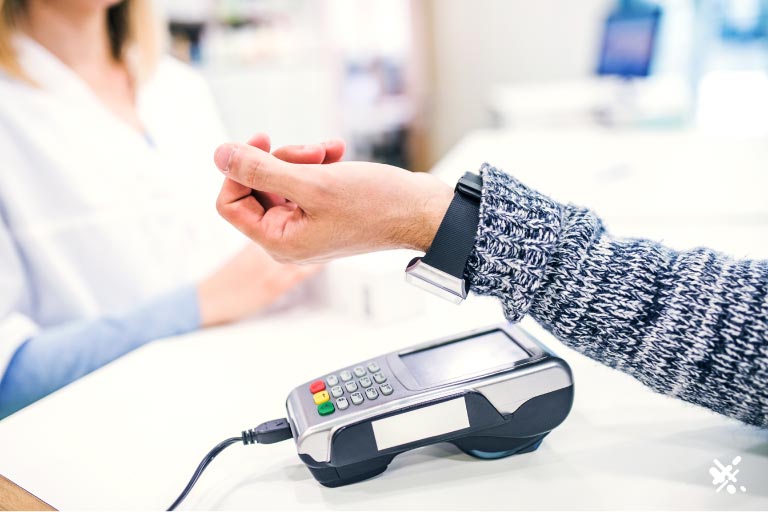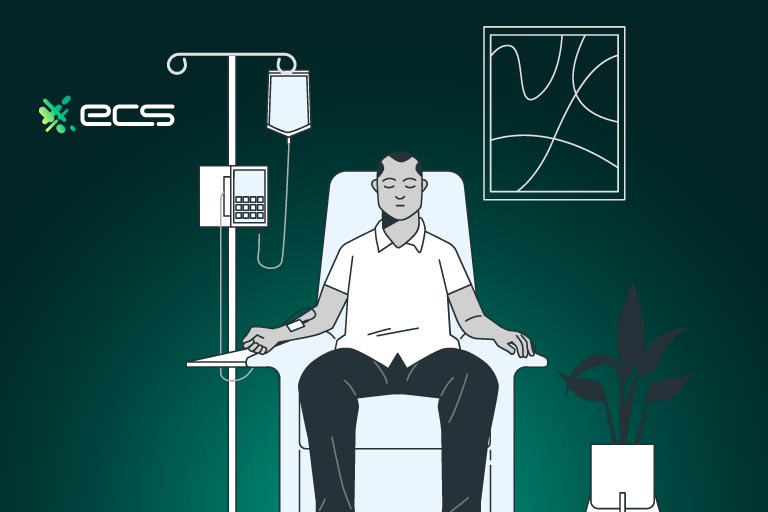“Do no harm” is part of the Hippocratic Oath. However, treating patients with care and warmth, the so-called “bedside manner,” is just as important as a doctor’s expertise. But what you may not have realized is that the patient payment experience also makes up the entirety of the patient experience.
Although a doctor is dealing with the science of the human body, scientific knowledge is not enough. Patients need to know that their doctor and medical facility, as a whole, care.
They need to trust their physician so that the medicine can go down smoother (e.g., they are willing to take the physician’s recommendations). Mary Poppins (who is not a doctor, to be clear) said it best when she said, “A spoonful of sugar makes the medicine go down.”
The Importance of Patient Experience
42% of patients say bedside manner is very important in overall satisfaction with a doctor’s visit. 17% say it was fairly important, 23% say it was important, 9% slightly important, and just around 8% say it is not important.
In other words, only for 8 people out of 100 is the patient-caregiver relationship irrelevant. The other 92 found bedside manners to be crucial to the experience.
So, what does this have to do with the medical billing process? Well, when processing claims medical facilities collect part of the bill from the patient’s insurance company and the remainder from the patient. But, for patients who have no insurance, the entirety of the payment must come from them.
Therefore, if a patient is paying for a service, they’d better be happy about it. Otherwise, they may find a new treatment facility, leave a negative review, or even ignore their bills, leading to uncompensated care and bad debt for the facility.

Think of Patients Like Customers
Think of your patients and everything about how they interact with your practice as a B2C (business-to-customer) relationship. Now, think of yourself in that type of dynamic with any business. Most people will take their business elsewhere if customer service is negligent-even if they like the product or service itself.
There are many things patients consider when choosing a care provider. The appearance of the waiting room is one of them. Wait times are another. The treatment itself is an obvious one. Your bedside manner as a medical professional is also relevant (per the above survey). And then, there is the process of collecting the bill.
You may not think this could be such a big part of the “customer (patient) experience.” But actually, it is a significant part, especially with health-related concerns are already an emotionally charged topic. A patient might be distracted, worried, or flustered as they leave a consultation with a physician. Being asked to tender payment may be off-putting, especially because a majority of Americans are financially strapped—so much so that a significant portion of them will avoid medical care.
Automated Patient Payments and Patient Experience
Automating payments is a good practice for your business. We are using the term automation loosely to suggest running patient cards you have “on file” to reduce friction during the visit. The patient can leave the practice without feeling pressured to pay.
The receptionist can politely ask if they can run the card “on file” for the visit. Of course, you must capture authorization from the patient in writing, which can be done at the first visit. You can use a payment plan agreement form to collect payment details and obtain consent to run charges for a-la-carte visits.
After payment details are captured, they must be securely stored in the practices online payment vault. But, before we get to how to track automatic payments, let’s consider how they fit into the framework of caregiver compensation.

How Were Doctors Paid Before Credit and Debit Cards?
In Ancient China, doctors charged a retainer fee to keep their patients healthy. If a patient fell ill, the doctor would not receive their retainer fee for that patient until they became well again. Doctors who needed to perform acute care (like surgery) were seen as inferior because they had failed in their preventative care.
This fascinating paradigm is obviously not part of modern Western medicine. Doctors and care providers are compensated for their services when patients need them. In times past, patients might pay doctors with cash but also with “in kind” services (that is, whatever the patient could offer the doctor, such as food or finished goods). This payment paradigm was especially prevalent in areas like the frontier.
By the 1950s, American doctors largely received payments from health insurance companies and not directly from patients themselves. The first group health insurance plan was offered in 1929. By the eve of World War II, only 9% of the country had insurance. But this number more than doubled by the end of the war, and by 1960 had hit 70%.
No matter who pays the doctor (the patient or their insurer), doctors need to make money like anyone else. Obviously, there are a number of different ways that patients can pay their doctors. While paying the physician with some hot cornbread and fresh laundering may be out of vogue, patients can use cash, checks, or plastic payments to compensate their care providers.
It is also up to the care provider in terms of what payment methods they are willing to accept. But before we go into that, let’s consider what type of payments care providers take.
What Kind of Payments Do Care Providers Collect?
There are four main types of healthcare payments:
- out-of-pocket
- individual private insurance
- employment-based group private insurance
- government financing (Medicaid or Medicare)
Around 30 million Americans (around 9% of the population) are uninsured. For whatever reason, these patients cannot obtain insurance, or they may elect not to have it. Usually, the reason is financial, as 64% of polled uninsured Americans said they couldn’t afford it. But the upshot of that percentage is that 36% of polled uninsured individuals had their own reasons (they think they don’t need it, or it conflicts with religious or ethical ideals). These patients will be paying for the entirety of their care out of pocket.
Then there are patients who do have insurance but who will also have to pay copays. Copays are the portion of payment shouldered by the patient while their insurance shoulders the rest. The average copay amount varies by insurance company and state, but generally speaking, it falls somewhere between $80 to $170 (a very wide range indeed).
These patients will need to tender payment for their visits. Sometimes, medical facilities collect the payment at the time of the visit (before or after). Other times, the medical facility will send the patient a bill. Either way, the care provider will need some way to collect this payment effectively—otherwise, they will be losing money.

Is Collecting Payments Slowing Down Your Cash Flow?
Medical facility cash flow is further complicated because insurance company payments are not in real-time. A care provider needs to send an 837 EDI to the insurance company, which details the nature of the ailment and the care rendered.
The insurance company will assess this information and return an 835 ERA outlining what they will cover. Hopefully, the two forms line up, but whether or not, the whole process can take weeks. The funds will then be released from the payer (the insurer) to the care provider with the assistance of a clearinghouse. However, insurance agencies often release payments in lump sum installments. These installments comprise a number of different visits.
It’s impossible to decipher from the dollar amount of the payment what visits were included in that sum. That information needs to be decoded by comparing the 835 to the 837 and the deposit amounts.
As you can see, this is a lengthy, time-consuming process. That’s why doctors, therapists, dentists, and other care providers typically don’t do any medical billing themselves. They give this to a dedicated receptionist to do or outsource it to a third-party medical biller. In any case, the slow nature of this cash flow does not go well with patients who are delaying their payments.
A-La-Carte Care Item Payments
Sending a bill to patients and requesting a paper check (for example) instead of collecting payment at the time of the visit compounds this particular revenue issue. If patients delay their payments or become delinquents, the physician who rendered care can suffer significant cash flow issues as they wait for insurers and patients to pay up.
Doctors and care providers may also collect payment for certain additional, a-la-carte goods. One common example is a dentist selling electric toothbrushes or home-based teeth whitening treatments. Another would be a physical therapist selling items that assist in PT, such as resistance bands and exercise balls.
Insurers do not always cover this type of ancillary take-home equipment. Care providers who feel it’s in the patient’s best interest to have it will need to be compensated for providing it.
Regardless, it’s in a practice’s best interest to “automate” all types of payments. Recurring charges are truly automatic in that they are tied to a certain date. But the other charges can also be “automatic” in that they are run with cards “on file” with patient approval.
How Do Patients Want To Pay For Medical Care?
Decidedly not with cornbread (although it was once in vogue on the frontier). And decidedly not in cash either. The question of patient payments is best answered by viewing healthcare patient payments in the broader context of the payment landscape.
A study by the San Francisco Federal Reserve found that cash is used for just 18% of payments, while 31% are made with credit cards, 29% by debit cards, and 13% by ACH.
Moreover, consumers (patients) do not typically carry large amounts of cash. The same Fed study found that the average amount of cash on hand is about $73, which is a generous estimate compared to other studies that have found that 76% of consumers are carrying less than $50 in their wallet, while most of the rest are not even carrying $10.
Looking at typical copays, this is not enough to pay for a doctor’s visit, a therapy session, or teeth cleaning. And for out-of-pocket payments, it’s certainly not enough.
But the picture is (of course) more nuanced than that. Cash preferences also vary by age and income. Studies have shown that lower-income households tend to pay for more purchases with cash.
This might have you thinking that taking cash payments is a good idea if you work with low-income patients. However, many of these patients might have Medicaid or subsidized insurance.
Paper Payment Are Not Automatic and Not Good For Caregivers
No matter how we slice it, cash is not king in the healthcare industry. Moreover, dealing with cash payments will probably be burdensome for most healthcare staff.
Now, on to other payment methods. What about paper checks? Checks present some of the same problems as cash. That is, the checks will have to be cashed. Even if the bank that services your practice checking account does mobile deposits, they may charge fees to process checks. Checks are also diminishing as a payment method. Some younger demographics have not even used a check within the past year.
Credit and debit card payments are the preferred consumer payment by far. This includes purchases such as copays and out-of-pocket payments for healthcare. Card payments are convenient, easy, and can be done in person or online. They can also be automated as recurring payments, which patients and practitioners can benefit from.

Automating Payment Plans To Help Financially Burdened Patients
You might be wondering: Aren’t recurring payments only for memberships and subscriptions? Usually, yes. However, healthcare payment automation can also be used for payment plans.
An automatic payment plan can allow patients to get the care they need while ensuring they get paid. The simple reason for this increasing practice is that many patients cannot pay for certain care in one lump sum.
About 61% of Americans have no money set aside for healthcare expenses. An overlapping 64% have even delayed seeking care due to other unexpected costs. 44% of polled patients would be willing to forego medical care—even if they knew they needed it—if it cost them more than $500. Insurance may not help, as 69% reported their deductibles and copays were still too pricey (and 22% reported they were impossible to afford).
To get more nuanced, of the patients who admitted to delaying medical care, 23% avoided follow-up care after a hospitalization, 18% avoided a wellness visit or routine checkup, and 12% avoided therapy or rehab after a procedure. These are dismal numbers, highlighting the fact that financial hardship is preventing people from getting the care they need.
How Do Medical Payment Plans Work?
Doctors have sworn to “do no harm.” But they haven’t sworn to proactively assist patients with their finances. Yet, there might still be something they can do to facilitate care: a medical payment plan agreement.
Much like the Buy Now Pay Later (BNPL) fintech permeating the retail landscape, medical billing automation can facilitate payment plans. These payment plans can make healthcare affordable for patients who could otherwise not afford it.
However, the question remains of how to collect automatic payments. The answer: a payment processor can facilitate automatic payments. Automated medical billing can involve patients uploading payment information to an online payment portal right from their homes or even at the point of sale in your office.
Automated healthcare payments will then be made on a pre-agreed date each month until the patient pays the balance off. There is no need to call the patient or send them paper bills to make them feel hounded, significantly improving the patient payment experience.
Patients Like Payment Plan Options
Despite their financial hardship, patients do want to pay their bills. A survey showed that 90% of polled hospital patients do want to pay their responsibility in full. More than 44% of patients took advantage of a payment plan to make this happen.
The price of care rendered also impacts the desire of a patient to engage in a payment plan. 39% of patients enrolled in payment plans for expenses that ranged from $50 to $250, but that percentage jumped to more than 51% once expenses surpassed $1000.
Patients also appreciate some flexibility in terms of repayment terms and fees. 33% wanted shorter payment plans to reduce fees, 25% said they did not want a payment plan if it came with fees, 25% said fees made no impact on their decision, and 17% paid in full to avoid fees.
Consider this when working out payment plans. In retail settings, companies that facilitate BNPL, like Klarna, Affirm, or Afterpay, charge the merchant a fee instead of the customer. You might discuss this paradigm with your payment processor to create a better customer experience.
Regarding how they made their payments, 63% said they wanted to pay online, 22.5% wanted to send in a check, 7.3% wanted to pay by calling in, and 6.8% wanted to pay in person.
The payment processor can set up automatic payments through an online payment gateway. Patients can log on to this gateway through a practice portal (which may be a platform, for instance, that you use to send them secure messages).
Health Benefits to Automated Payments?
Presumably, healthcare practitioners try to keep their offices clean. Even so, patients may perceive that the doctor’s office is, ironically, a great place to get sick.
Whether it is or isn’t, best practices include the availability of hand sanitizer and frequent cleaning of the office. These send messages to the patients that cleanliness and hygiene are important. Another signal is how you collect payments.
Traditional Payment Methods
Traditional payment modalities are opportunities for patients to exchange germs. A patient touches their card, hands it over to a receptionist, and takes it back when the payment is completed. Or, they input the card themselves into a terminal and then enter the PIN (if it’s credit) or sign (if it’s debit). Either way, a lot of unnecessary touching is involved.
Contactless Patient Payments
Unnecessary because card companies will phase out magnetic strips, PINs, and EMV chips (while not entirely obsolete) to replace them with 100% contactless payments. In contactless payments, the customer or patient holds their card or mobile phone a few inches from a POS terminal. Radio waves complete the transaction using encrypted data.
This payment type has many benefits, including rapidity and security, as encryption prevents card information theft. But they have hygienic benefits as well. A survey by Mastercard found that 82% of polled consumers think contactless payments are a cleaner way to tender payment (and they are).
Contactless payments surged during the COVID-19 pandemic but will remain a part of the payment landscape moving forward. In addition to hygiene, transaction speed and security are other reasons.

Automated Patient Payments
But there is something even more “contactless” than a contactless payment: automated patient payments for treatment. If a charge is run recurrently, or even a-la-carte with patient approval, the patient never needs to take out their card in the office. The medical office can ask if they can run the card “on file” without handing it over to make a payment.
No contact is involved, not even the contact of approaching the receptionist’s desk and breathing the same air (for those who are cautious about that).
How Do I Store Patient Payment Information?
To run automatic payments, you must have patient card information on file or bank account details if you use the ACH method. But, this information must must be secured. Unsecured payment details violate both the HIPAA code and the PCI DSS codes set forth by card networks.
There are several complex rules around storing credit card information, but the easiest way to handle them is to pass them on to the company that helps you process payments. This company will have a software interface your receptionists (or you) can use to access stored financial data.
The data will be encrypted and tokenized so that only the processor can pass it on to the banks involved. For instance, it might display the last four card numbers so the receptionists can confirm the card, but they will not have access to the whole card number.
Automated Payments: Good For Patients…And Physicians
The particulars of how automatic payments work need to be hashed out with a payment processor. But aside from the details, the overall idea creates a more positive patient experience.
Patients will not have to go through the potentially frustrating or embarrassing art of bill negotiation at the receptionist’s desk. Processing automation can allow them to go home without the hassle of settling their bill.
Then, there is also the benefit of revenue cycle management for physicians. While waiting for the insurer to remit payment for your services, you won’t have to wait for your patients to send you a paper check.
Contact ECS Payments to learn how automated billing can help your practice with patient experience and cash flow management.
